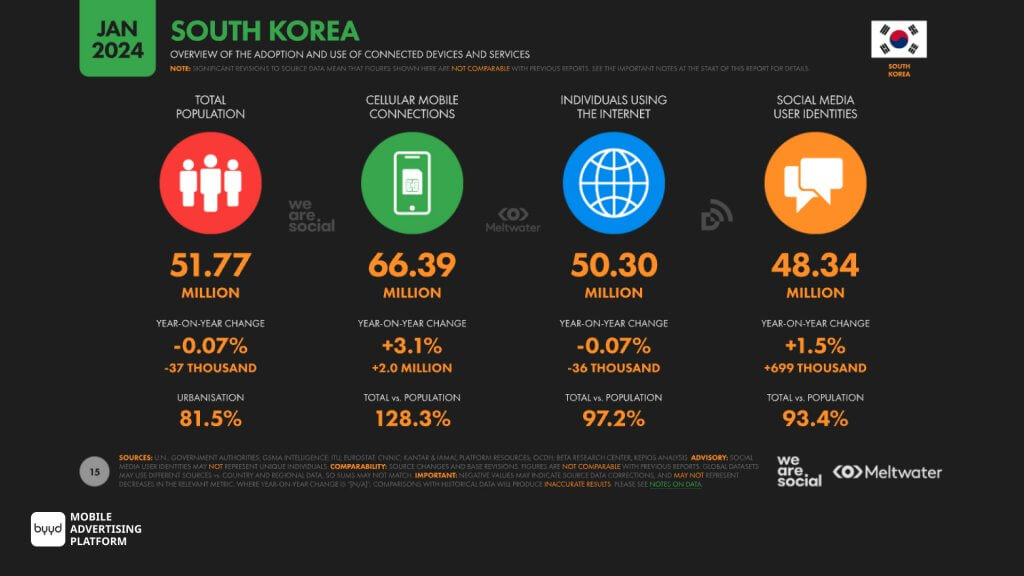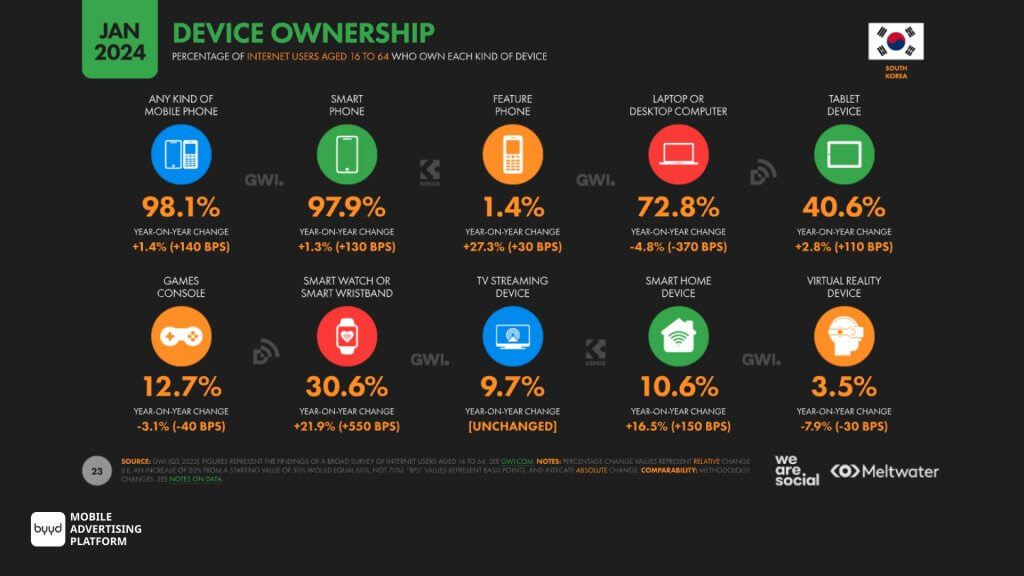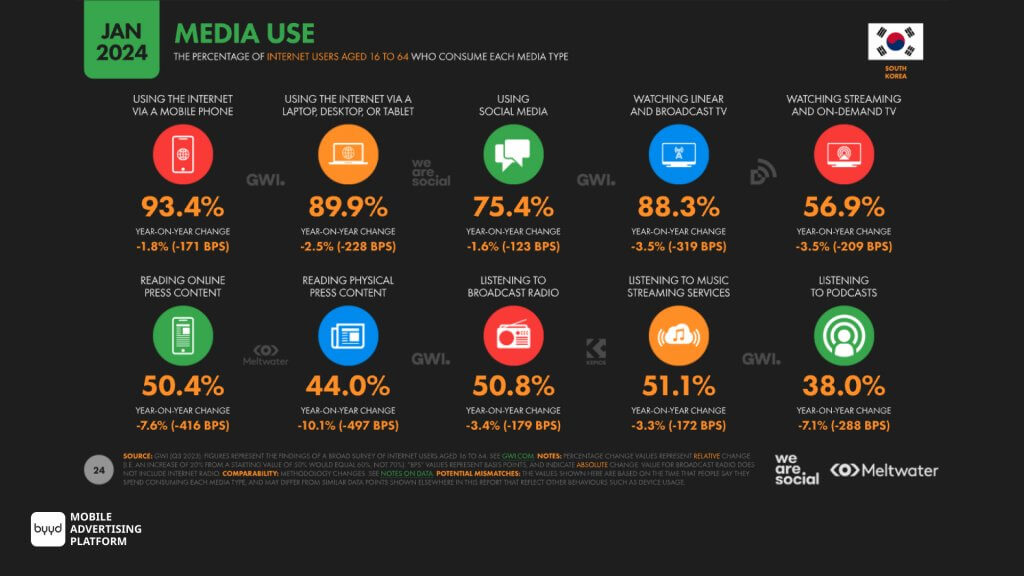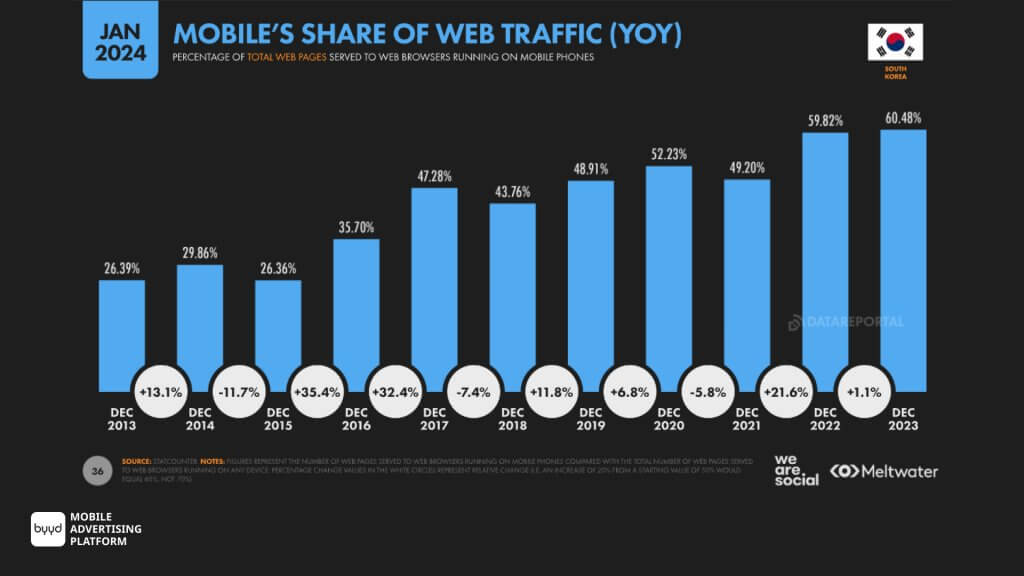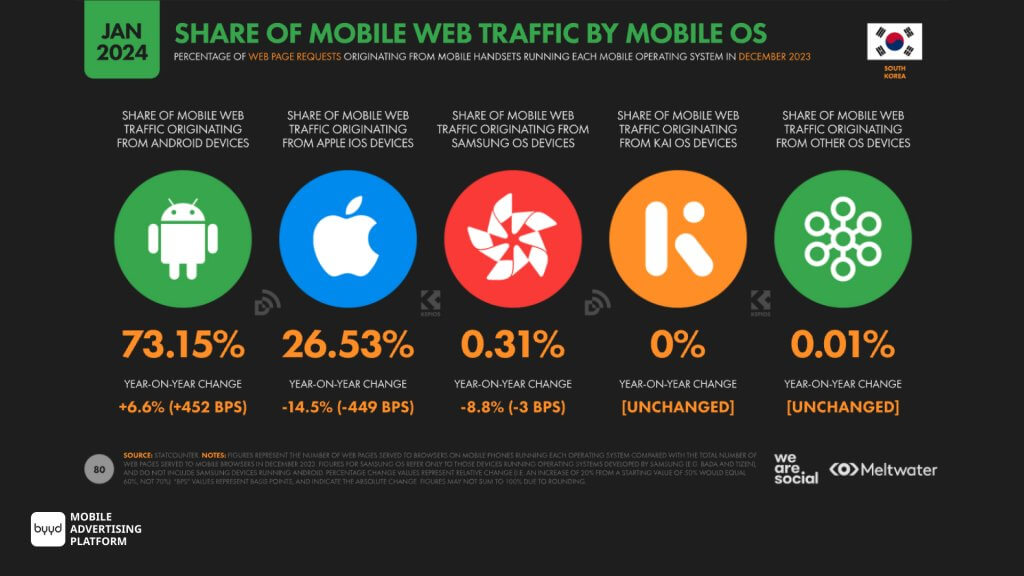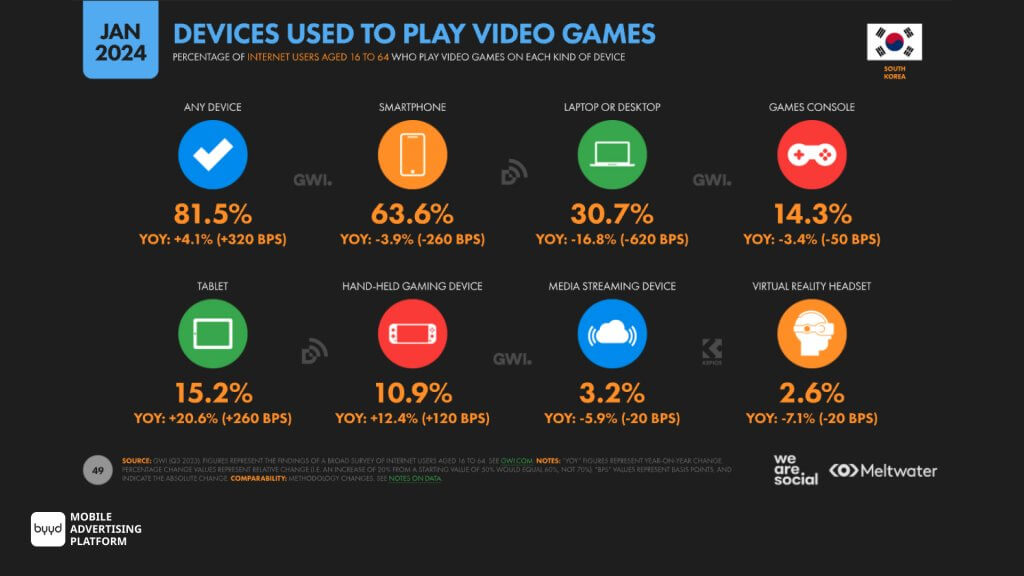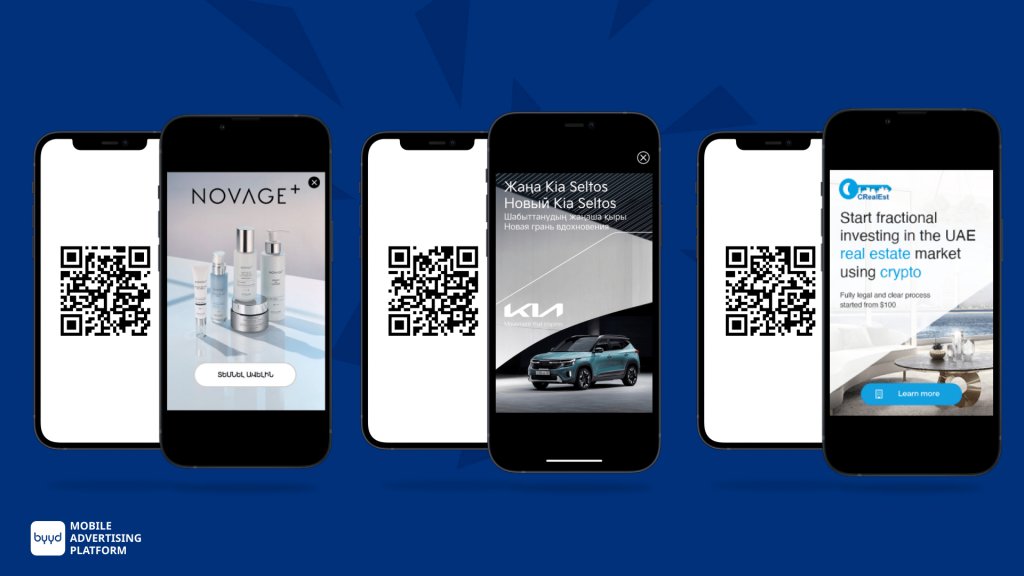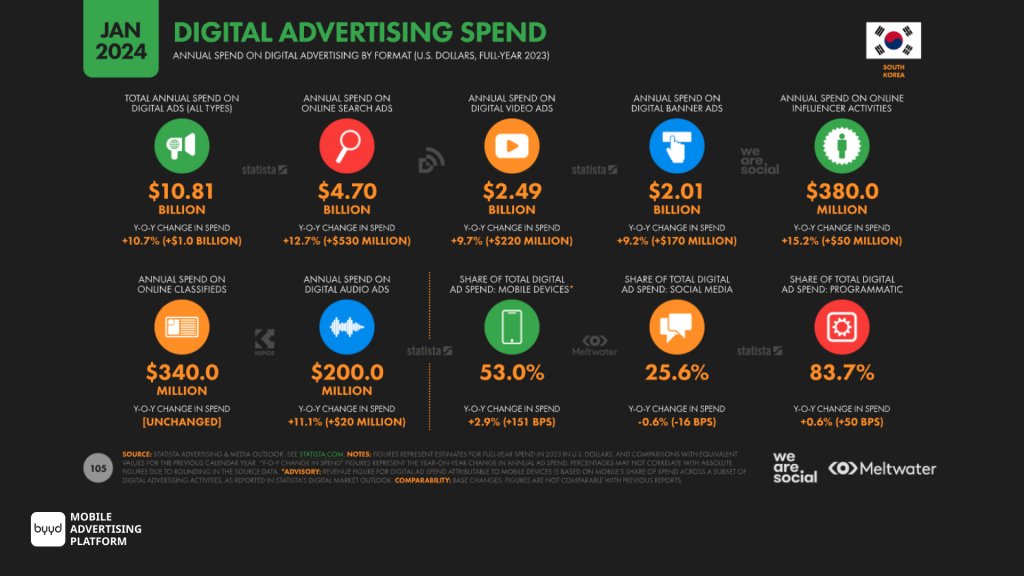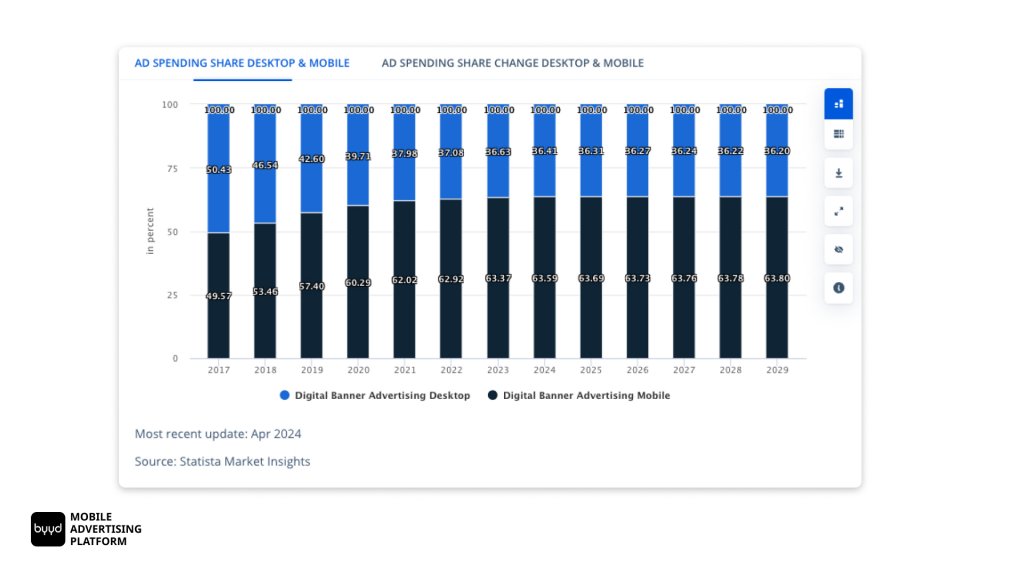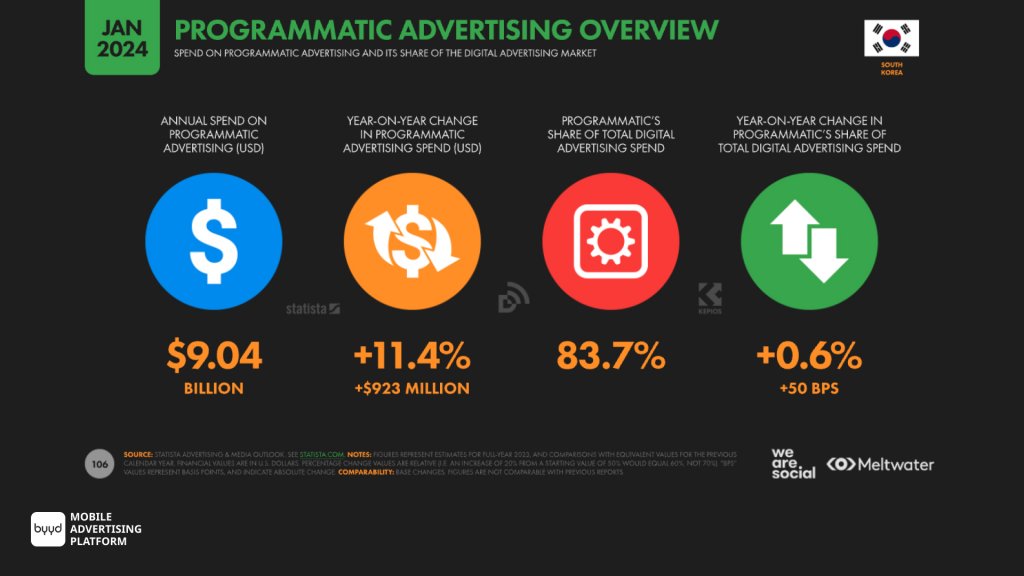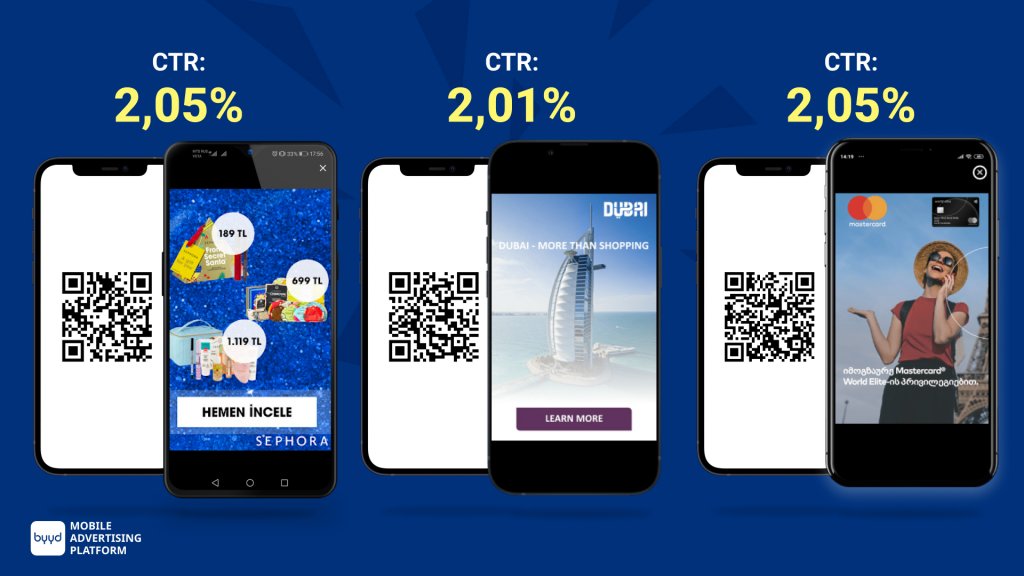South Korea: Key Features of Mobile Advertising
As mobile phone penetration has surpassed that of personal computers, mobile devices now dominate personal communication and various daily activities. With mobile devices always with us, marketers and advertisers have increasingly incorporated mobile strategies into their promotions.
While the mobile industry is growing globally, its growth and popularity are particularly notable in Asian countries, especially Korea, where businesses focus heavily on mobile programmatic advertising.
To understand why this is the case, let’s analyze the digital and mobile market in Korea and determine if advertisers should prioritize mobile promotion in 2024.
Statistical Facts about South Korea
To understand why South Korean users have transitioned to mobile devices and why mobile advertising has become the top choice for brands, it is important to present some statistical data and analyze the market.
South Korea has a population of 51.77 million people. Meanwhile, mobile connectivity is available to 66.39 million people. The number of internet users is 50.30 million, which is 97.2% of the country’s population.
The gender distribution is nearly equal: 50.1% women and 49.9% men. The average age of a South Korean resident is quite high – 44.8 years. Over the past five years, the population has remained stable and fluctuated only slightly.
How do South Korean residents prefer to receive information?
South Korea is a highly digitalized country: 98.1% of the population owns some type of device. The distribution of devices is as follows:
- Smartphones: 97.9%
- Feature phones: 1.4%
- Tablets: 40.6%
- Desktops/laptops: 72.8%
Device ownership determines how South Koreans consume information. Thus, 93.4% prefer to use media through smartphones. Through desktops, tablets, and laptops, it is 89.9%.
How much time do South Koreans spend online?
South Koreans spend a significant amount of time online. According to Data Reportal 2024, 97.2% of the population uses the internet, with mobile devices being the dominant choice – 96.7% prefer accessing the internet through mobile devices.
South Koreans spend an average of 5 hours and 19 minutes per day on the internet, with:
- 2 hours and 43 minutes on smartphones
- 2 hours and 36 minutes on desktops and tablets
This means that the share of mobile internet usage in South Korea is 51%.
Among the main reasons for using the internet are searching for information (73.0%). This is followed by:
- filling spare time (63.1%)
- keeping up with dates and events (49.0%)
- searching for information about brands (48.6%)
- watching videos and TV (44.7%)
- accessing and listening to music (41.6%)
- gaming (28.7%)
Mobile Web Traffic Share in South Korea
Mobile traffic share refers to the percentage of total internet traffic generated by users through mobile devices, such as smartphones and tablets. In South Korea, the mobile traffic share significantly surpasses desktop traffic. Research shows:
- Mobile traffic share: 60.48% (yearly change +1.1%)
- Desktop/laptop traffic: 38.68% (yearly change -1.0%)
Looking at the dynamics of mobile traffic, it is evident that it has grown significantly over the past two years. Over the last 10 years, there has been a steady increase, with temporary declines having little impact on the overall trend.
It is also worth mentioning the distribution of mobile web traffic by operating systems. As in most countries, Android leads in South Korea (73.15%). Apple iOS is in second place with a share of 26.53%.
Interestingly, there is an increase in users on Android, while Apple devices are seeing a noticeable decline in their share of mobile traffic.
What type of video content do South Koreans prefer?
Video content is the most popular type of information today, not only in Asian countries but worldwide. The majority of the population — 84.9% — watch some form of video content. The most popular and consistently in-demand segment is comedy (19.5%).
Other popular types of video content include:
- Music videos — 27.6%
- Live streams — 10.8%
- Sports clips — 28.2%
- Product and brand reviews — 17.0%
- Gaming videos — 16.4%
Gaming, in general, is quite popular in South Korea. 81.5% of Koreans play games on any device, but preference is given to smartphones. The priority distribution is as follows:
- Smartphones — 63.6%
- Desktops/laptops — 30.7%
- Game consoles — 14.3%
- Tablets — 15.2%
South Korea’s mobile application market
In South Korea, the number of mobile app downloads is quite impressive — 1.92 billion. There is also a noticeable increase in downloads by 2.6%. According to the data, on average, users spent $7.86 billion on apps in the past year — 25% more than in 2023.
How much time is spent on apps? Data Reportal shows that users spend an average of 3 hours and 31 minutes on smartphones every day. Most of their attention is given to entertainment apps — 37.5%.
The breakdown is as follows:
- Utilities/Productivity — 22.7%
- Mobile games — 14.6%
- Social networks — 12.4%
- Shopping — 2.0%
South Korea’s advertising market: the popularity of mobile advertising
South Korea is one of the world’s largest advertising markets. Total expenditures across all types of advertising amount to $10.81 billion, with a yearly growth rate of 10.7%.
Search advertising remains at the top with a budget of $4.70 billion, followed by:
- Video banner advertising at $2.49 billion
- Digital banner advertising at $2.01 billion
- Influencer spending at $380.0 million
As expected, most digital advertising focuses on mobile devices, making up 53.0% of the market and growing by 2.9%. Experts predict this trend will continue to surpass desktops until at least 2028.
Programmatic advertising constitutes 83.7% of the total advertising spend. Overall, programmatic advertising in South Korea continues to expand. It occupies a substantial share of digital advertising and continues to increase its volume, with a growth of 11% or $923 million in 2024.
Moreover, growth will continue. According to Statista, by 2028, the programmatic advertising market in South Korea is projected to reach $12.30 billion.
Why Should Brands Use Mobile Programmatic Advertising?
Now that you know about South Korea’s digital market, let’s answer the question: why should brands prioritize mobile advertising?
First, almost the entire population has mobile devices. People prefer to get information, stay connected with friends, and spend their free time using their smartphones.
How is this beneficial for advertisers? The answer is simple: ads need to be shown where user attention is. And attention is in the mobile segment, mainly spread between social media and mobile apps. Given that programmatic advertising is the leading method of placement, ads should be shown on mobile devices through this channel.
How can this be done? Very simply: by turning to a qualified platform that can help find the target audience and deliver the brand’s message.
By the way, we are just such a platform. For over 9 years, we have been helping brands worldwide, and our work is backed by 25 000 advertising campaigns. Check out our case studies at the link.
Was this helpful? Then share it with your friends and colleagues!
For consultation and collaboration inquiries:
- Leave a request on the website;
- Email us at hello@byyd.me
